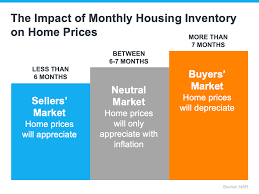How to Tell If It’s a Buyer’s or Seller’s Market Before Selling Your Home!
If you’re thinking, “I need to sell my house fast,” understanding your local real estate market is crucial. Knowing whether you’re in a buyer’s or seller’s market can help you set realistic expectations and create a selling strategy that maximizes your home’s value. This will also give you a great indication of how long it will take your home to sell.
What Is a Buyer’s vs. Seller’s Market?
- Buyer’s Market: There are more homes for sale than there are buyers. This leads to lower home prices, longer selling times, and buyers having the upper hand in negotiations.
- Seller’s Market: There are more buyers than available homes, driving up prices and leading to faster sales. Sellers have the advantage in negotiations.

How to Evaluate Your Local Real Estate Market
Here are some key indicators to determine whether you’re in a buyer’s or seller’s market:
1. Check Housing Inventory (Months of Supply)
- A balanced market typically has 5 to 6 months of inventory.
- More than 6 months = Buyer’s market (higher supply than demand).
- Less than 5 months = Seller’s market (low inventory and high demand).
- You can check inventory reports on websites like Zillow, Realtor.com, or through local real estate associations.
- Using Redfin to Determine Local Inventory:
- One way to estimate how much inventory is available in your market is by using Redfin. Go to Redfin and search for your city or zip code in the search bar. When your city appears, click on “All Filters” at the top of the screen. Run a report of homes that have sold in your market in the past 30 days. Take this number and divide it by the total number of homes currently for sale. This calculation will give you an estimate of how many months of housing inventory exist in your local market.
2. Analyze Recent Home Sales and Price Trends
- If home prices are consistently rising, it’s likely a seller’s market.
- If prices are dropping or stagnating, it’s likely a buyer’s market.
- Look at comparable home sales (“comps”) in your neighborhood over the past three to six months.
- Make sure the Home you are comparing your to is similar in make, year, condition, and within .25 miles (if you can)

3. Monitor Days on Market (DOM)
- Faster sales (under 30 days) suggest a seller’s market.
- Longer selling times (over 60 days) indicate a buyer’s market.
What If You Need to Sell Your House Fast?
Regardless of market conditions, if you need to sell quickly, here are some strategies:

- Price your home competitively to attract serious buyers.
- Enhance curb appeal and staging to make your home stand out.
- Work with a real estate investor or cash buyer if you need a fast, hassle-free sale.
- Consider alternative selling methods like rent-to-own or seller financing.
Final Thoughts
Understanding whether you’re in a buyer’s or seller’s market can make a huge difference in your home-selling strategy. By analyzing key factors like inventory, price trends, and days on market, you can make informed decisions to sell your home efficiently and for the best price.
If you’re ready to sell and want to explore your options, reach out to Local Home Investments—a trusted real estate expert who can guide you based on current market conditions.

